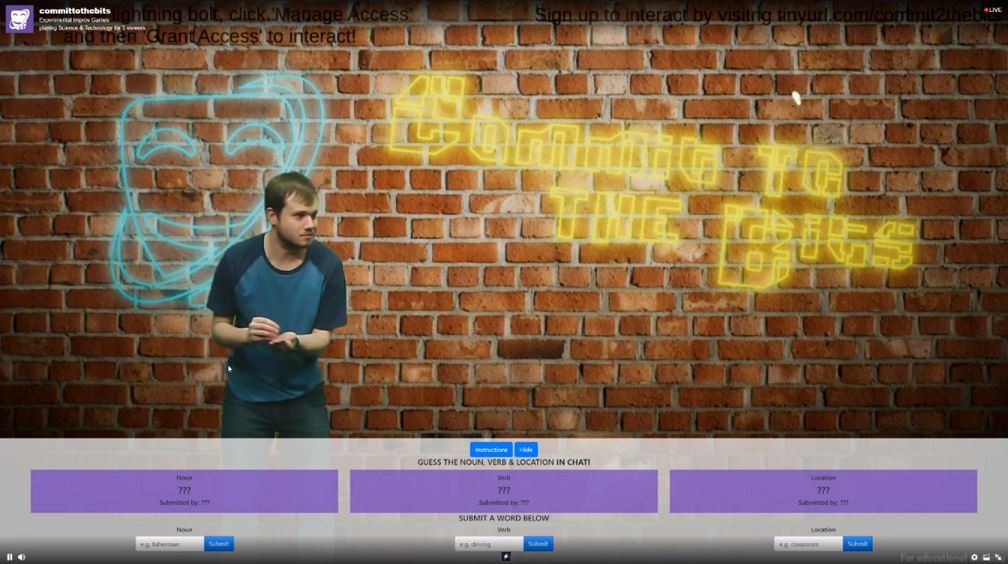
Research Questions
- What novel interaction type beyond voting can we produce?
- How will constraining audience interactivity to chat affect conversations?
- How will constraining audience submissions by word type affect submissions?
Game Overview
Guesstination Unknown is based loosely on charades. We wanted to create a game where audience members could play alongside the performers. Audience members submit noun, verb, and location suggestions to complete a concept in the format “A [Noun] [-ing Verb] in [Location].” All of the audience suggestions are randomized to create a single concept (A criminal dancing in Paris).
A single performer reads this concept but keeps it a secret from the audience. They perform a scene based on the concept. The audience members guess what the noun, verb, and location are until they collectively have all three correct.
Interface
This game had the most complex user interface. The interface was split into two screens that could be switched with a button in the top right corner, with one screen for viewing guessed words and the other for submitting words. Viewers would guess words in chat.
Hosts would be able to cycle through submissions for individual words and view who submitted them before locking in a set of three words to use for the guessing game. This helped in fixing some level of variety in submissions.
When words were guessed, they appeared on the View Guessed Words screen, with both the guesser and submitter’s name displayed.
Technical Implementation
Submitting words worked more or less the same way as Freeze Tag. Guessing was done through the chatbot, which was able to detect if answers were close enough to the original submission to be considered correct. Submitters were barred from guessing their own submissions.
Lessons Learned
Despite not being very popular amongst performers, this game was received well by audiences.
This did lead to a more active chat, which made the stream more lively.
Objective constraints, such as asking for a noun instead of a contextualized noun, result in inputs harder for the actors to work with and places more responsibility on the audience to be creative.
